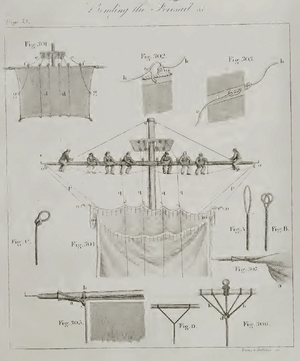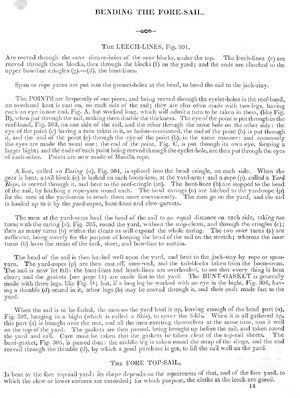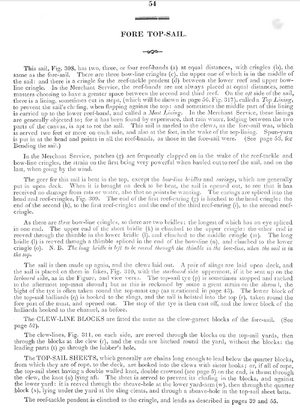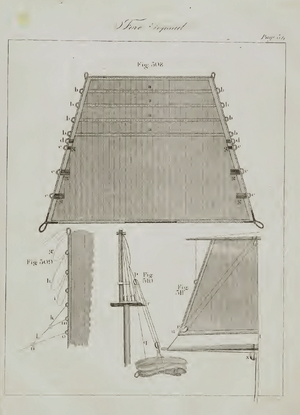Hi Don.
For Discovery, Steel is as close as it gets. Lever is a bit later but still good. I think there is some very useful content in Harland. (Seamanship in the age of sail)
Nobody will argue (or should not.) if you base your rigging on those 3 volumes.
I use any other information I can find to fill in any gaps.
Further reading.
Spars and rigging 1849, J McLeod Murphy and W N Jeffers.
George Biddlecombe.
Nares 1862
Seamanship B Luce. much later but awesome drawings.
There are probably more also.
This is from Steel.
PENDENTS. Large, but short, ropes which go over the mast-heads, and to which are hooked the main and fore tackles. There are, besides, many other pendents, with a block or tackle attached to one end, all of which serve to transmit the effort of their tackles to some other object: such are the BILL-PENDENT, BRACE-PENDENTS, PREVENTER BRACE PENDENTS, BURTON-PENDENTS, FISH-PENDENTS, GUY-PENDENTS, MAIN-STAY-TACKLE-PENDENT, PENDENTS OF TACKLES, QUARTER-TACKLE-PENDENTS, REEF-TACKLE-PENDENTS, RUDDER-PENDENTS, STAY-TACKLE-PENDENTS, TOP-ROPE-PENDENTS, TRUSS-PENDENTS, VANG-PENDENTS, WINDING-TACKLE-PENDENTS, and YARD-TACKLE-PENDENTS.
I guess any rope with a block in the end could be called a pendant.
Hope this helps.
Regards
Allan.






